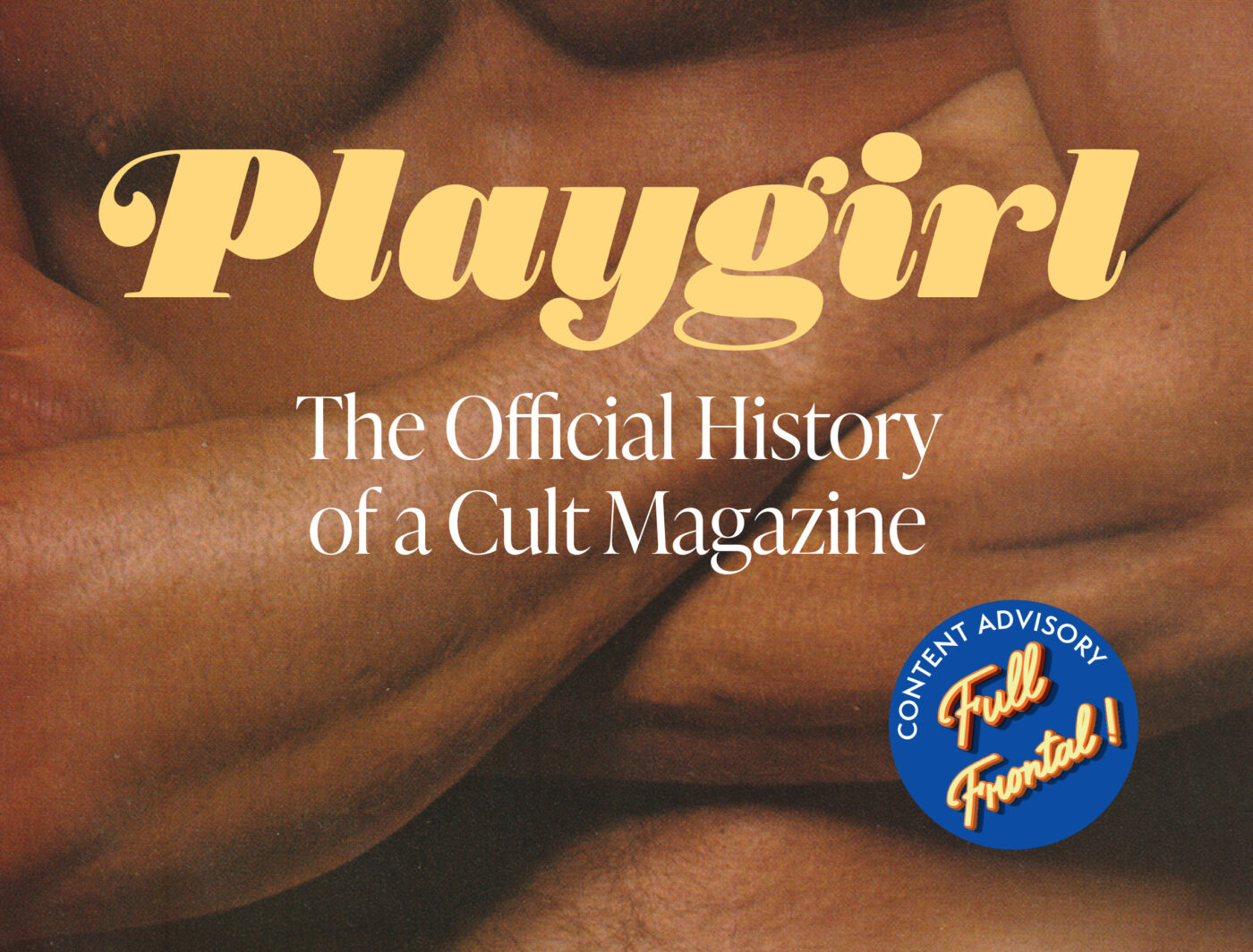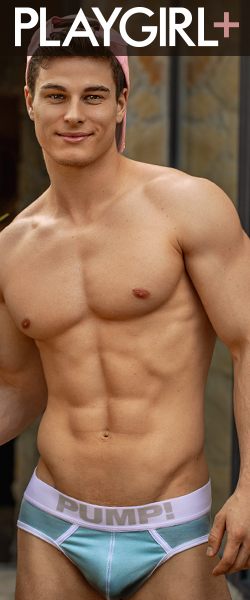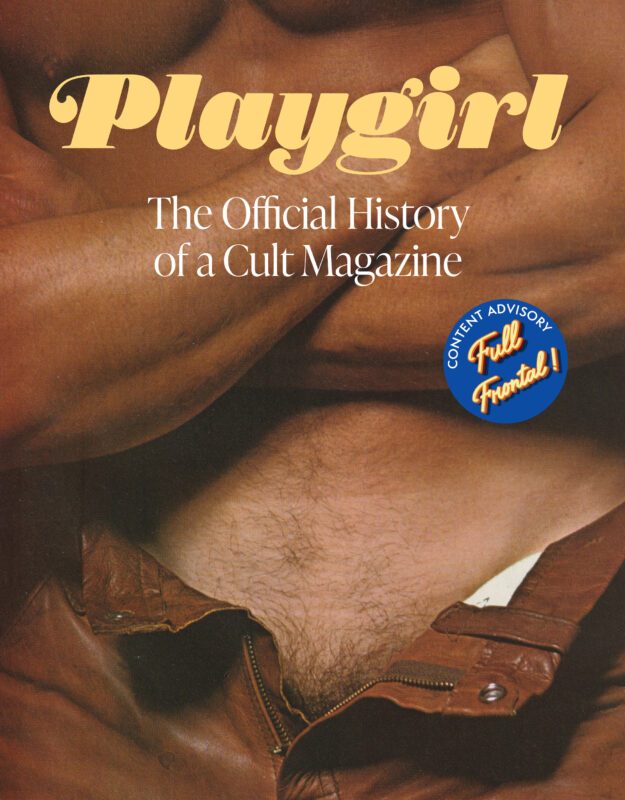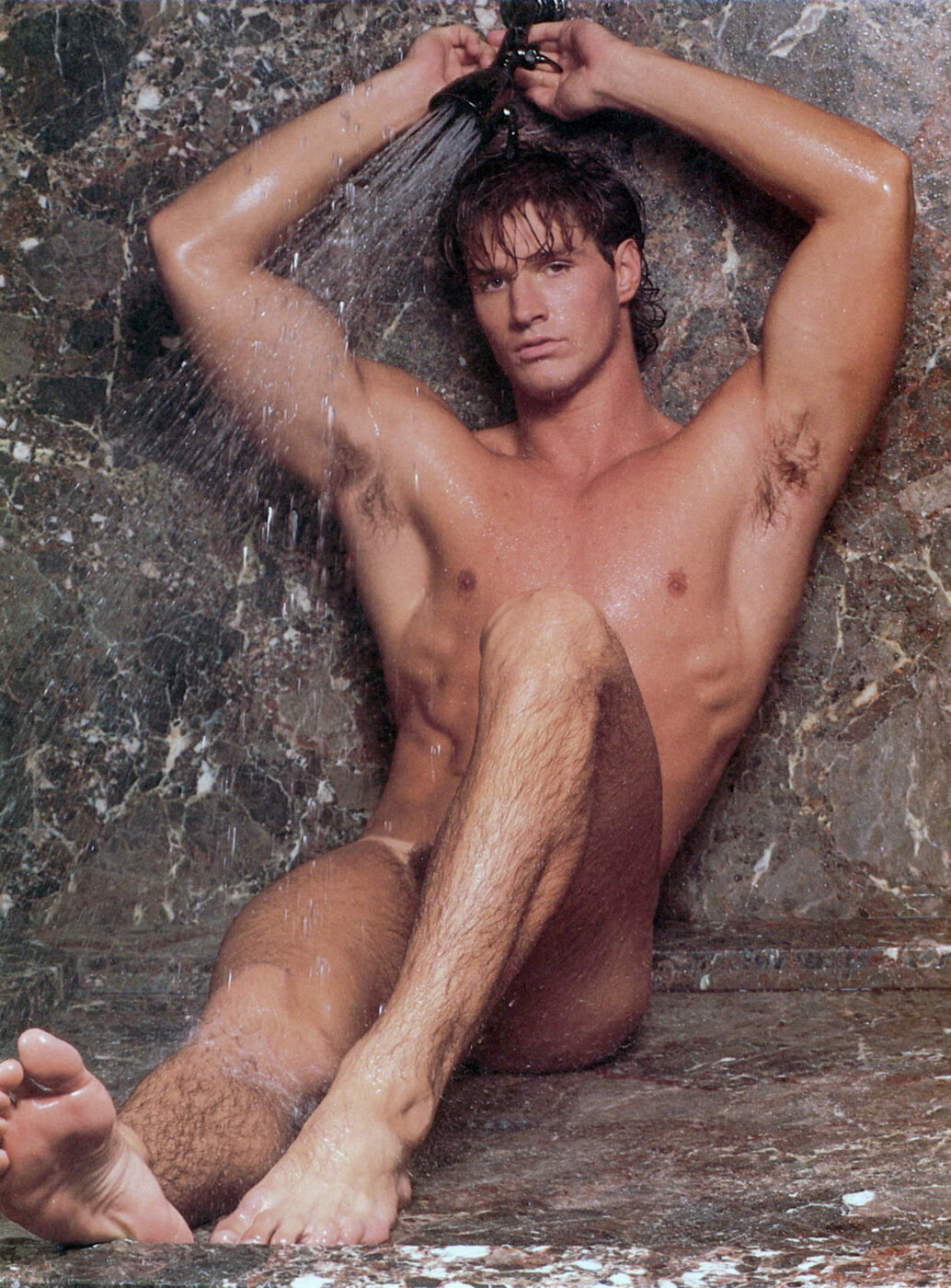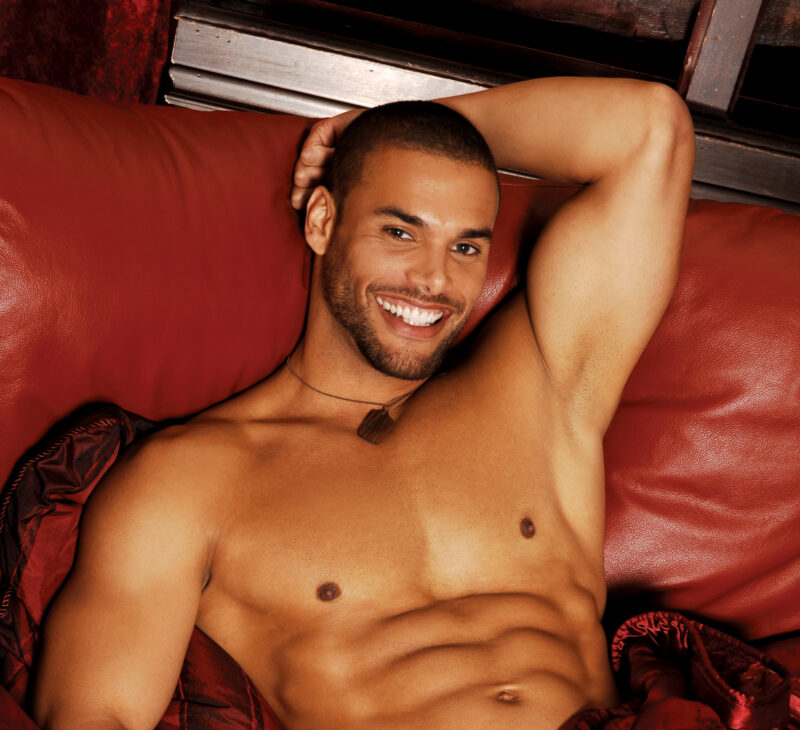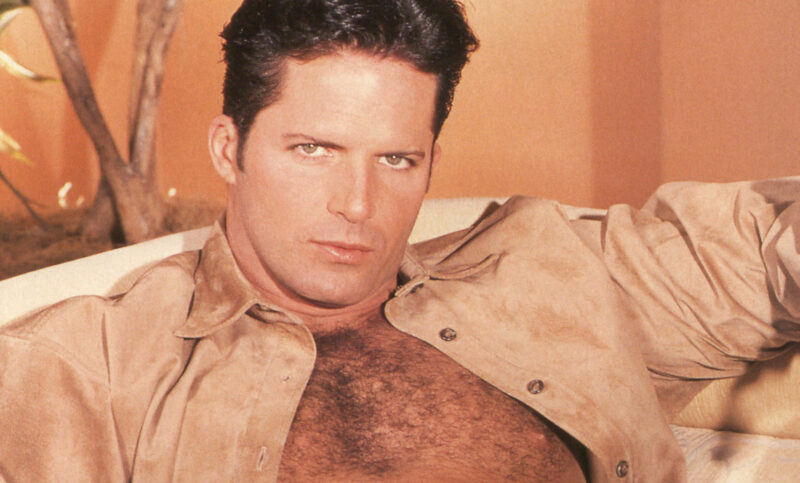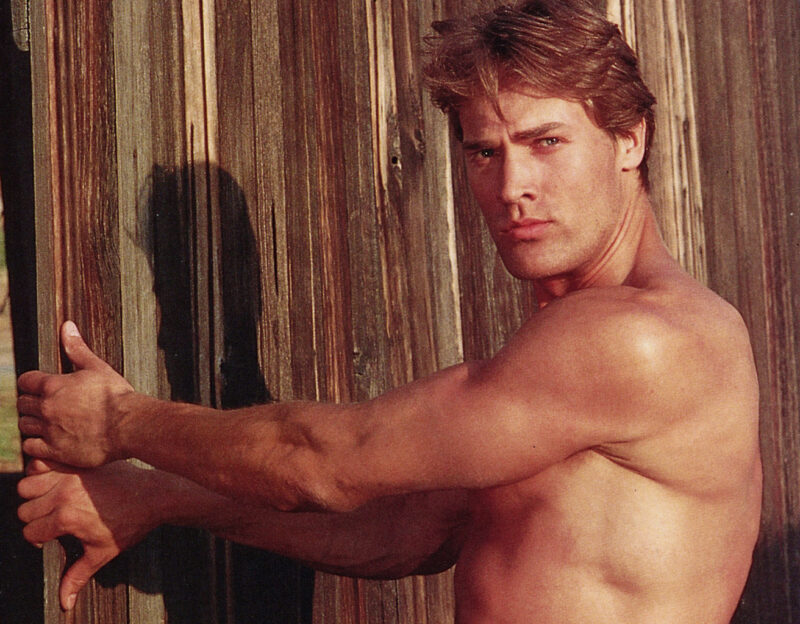Today Abrams releases a “lively, unbelievably fun (even titillating) art book that celebrates Playgirl magazine 50-year anniversary, including historic articles, spreads, commentary, photography and artwork from the ’70 through today.” The book, edited by Daniel McKernan, also features new essays by creative director Mickey Boardman and former editor-in-chiefs Nicole Caldwell and Michele Zipp. We are honored to reprint Bruce LaBruce’s insightful foreword.
It would be easy (and foolish) to dismiss the publication of a book on the history of Playgirl magazine as mere brazen nostalgia or camp fetish for our favorite lampoonable decades of the 20th century: the ‘70s—the decade of the magazine’s debut (in 1973)—fraught with porn stashes, kaftans, wood-paneled basements, key parties, and Quaaludes; and the ‘80s—the decade of the magazine’s popular ascendancy—evoking padded shoulders, Jheri curls (or curly bangs), big hair, AIDS, and The Cosby Show. What really matters about the advent of Playgirl, a feisty feminist corrective to those big-titted juggernauts Playboy and Penthouse, whose outsized popularity seemed to imply that only men could get their rocks off by perusing the nude human form, is that feminists finally got to eat their cake, so to speak, and have it.
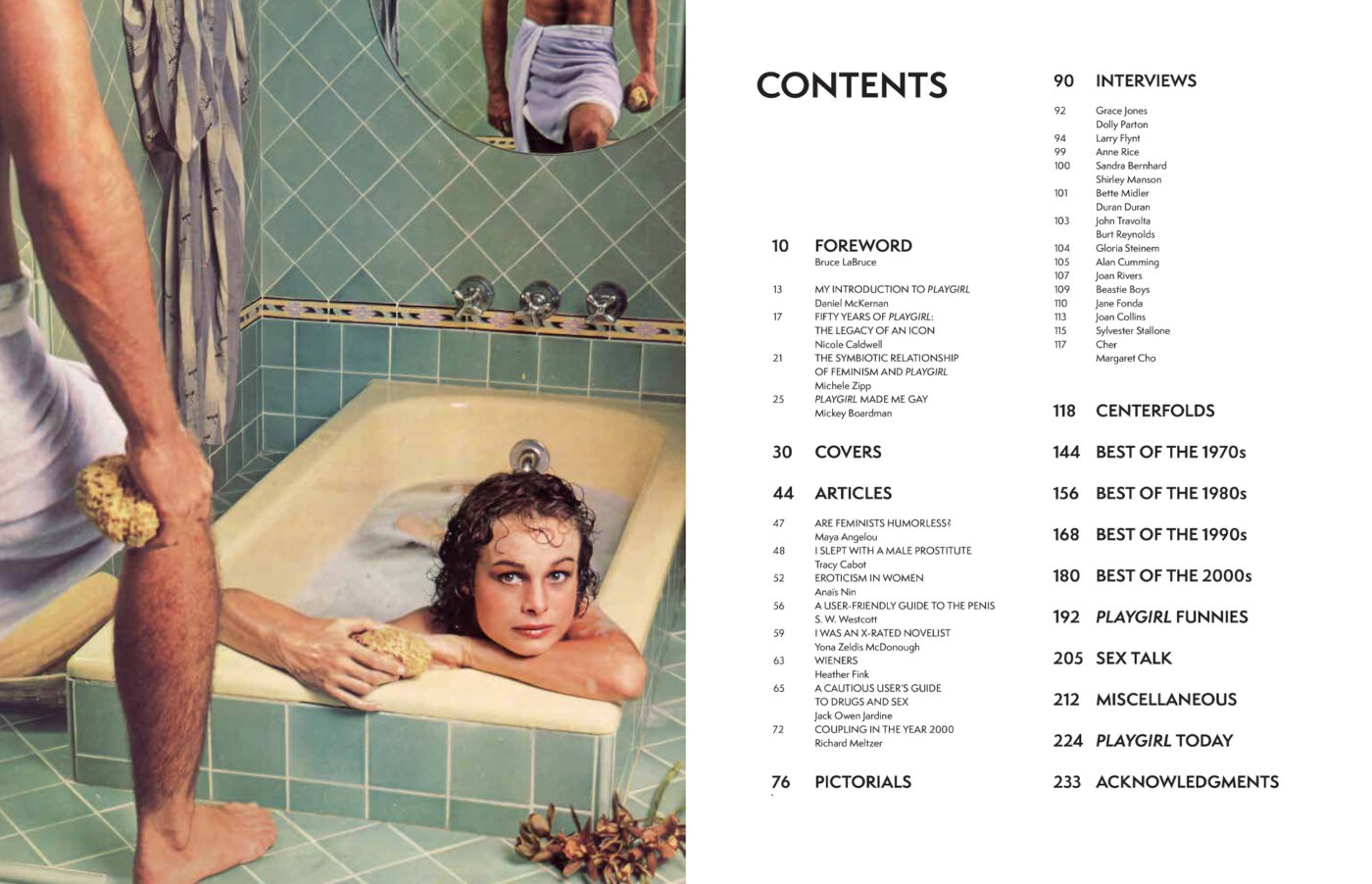
In a famous episode of the popular ‘70s sitcom The Mary Tyler Moore Show entitled “Not Just Another Pretty Face,” which aired in September of 1974, not long after Playgirl hit the stands, Mary, a single working woman in her thirties, has a dilemma: in a department store, she meets a tall, beautiful, and slightly vapid male ski instructor named Paul, whom she begins to date (and have sex with: that she fucks her dates in the series is always understood but never overtly stated) purely for his looks. When her neighbor, Phyllis (played by Cloris Leachman, interviewed in the very first issue of Playgirl!), expresses surprise that she let herself be picked up, Mary says slyly, “Don’t be silly. I wouldn’t let a man pick me up. I picked him up.” This notion in America at this historical moment was pretty heady stuff for TV––a woman picking up a man in broad daylight and starting to have sex with him solely on the basis of physical attraction. The episode hammers home the point: Mary’s boss tells her, reproachfully, “I hate to tell you, but he’s prettier than you are!”, and Mary’s always horny coworker Sue Ann Nivens blurts out to Paul, “Incidentally you are the most gorgeous hunk of flesh I have ever seen.” Housewives may have clutched their pearls, but this episode nailed the nascent zeitgeist: female sexual empowerment, the objectification of the male body, and the female appropriation of the male gaze were not only possible, but somehow long overdue. Phyllis’s teenage daughter, Bess, gives the sentiment its full feminist expression in a pep talk to Mary: “So what if you just go out with him because he’s attractive. Men go out with women just because they’re attractive. Nobody seems to think there’s anything wrong with that. I mean, for thousands of years men have been using women, and I think it’s about time we started using them back!” (It took the spirited teenager on the show to identify using men as playthings as a feminist revenge fantasy!) I don’t think Mary was ever shown reading an issue of Playgirl, but she—and every other female character on the show—Phyllis, Rhoda, Sue Ann, young Bess, even Georgette—certainly would have.
Of course, gay men, who have never had a problem sexually objectifying the hell out of each other, were quick to jump on the Playgirl bandwagon. As a young teenager in the late ‘70s, I used both furtively purchased copies of Playgirl and the porn-adjacent GQ magazine of the era to jerk off to when no one was home. But it was Playgirl, with its trenchant columns (“Are Feminists Humorless?” by Maya Angelou? Priceless!), its incisive interviews (Sandra Bernhard: “Pornography is an absolute necessity. I don’t condemn it in any way at all. I actively condone it. I think it’s very healthy and actually helps a lot of people come to terms with their own sexuality.” Hallelujah!), and its free and open discussion of sexuality (“A Cautious User’s Guide to Drugs and Sex.” Essential!) that proved to be a worthy and equal companion to Playboy (…)
Get your copy of Playgirl: The Official History of a Cult Magazine

